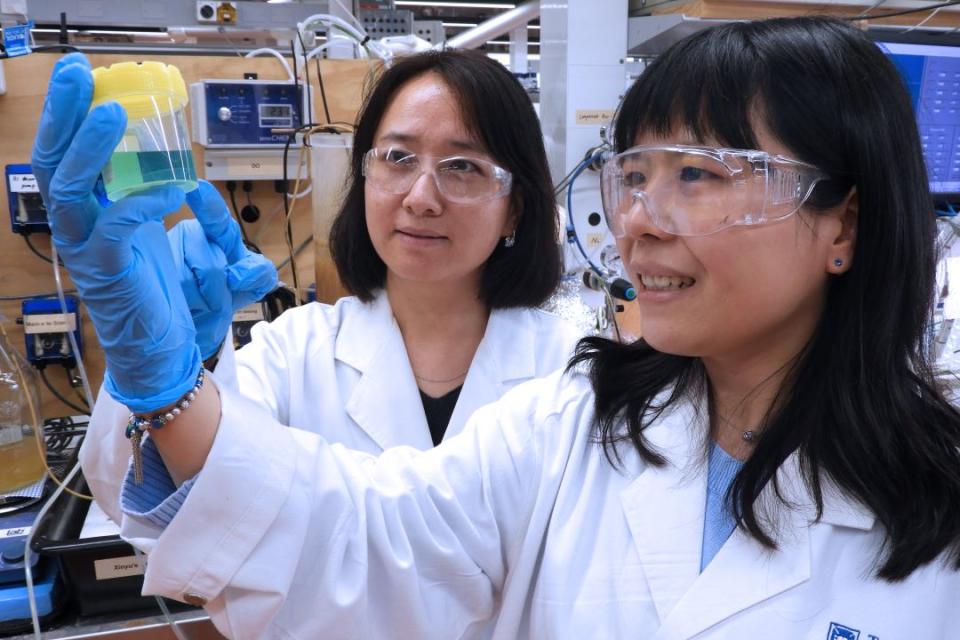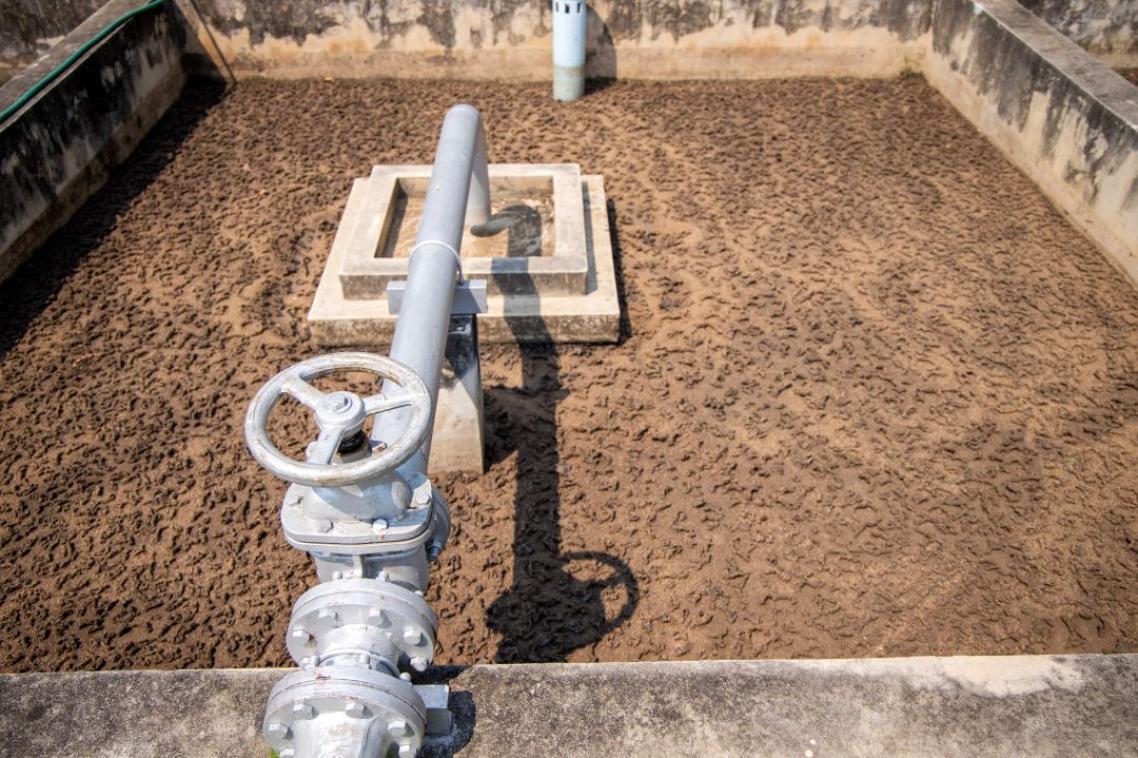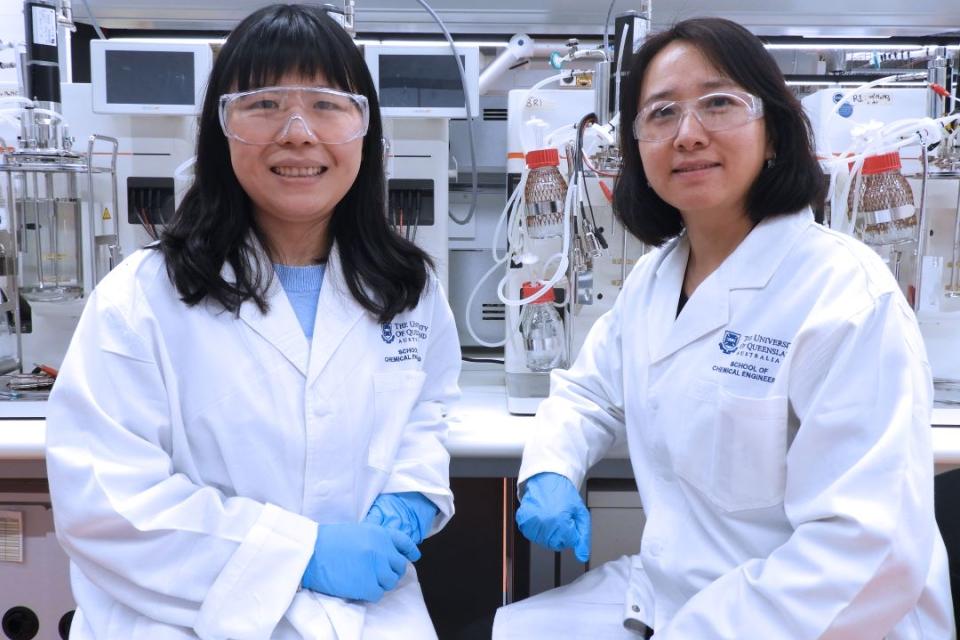UQ researchers tracking ammonia emissions in wastewater treatment

Researchers have found that open air sludge drying can be responsible for significant gaseous ammonia emissions.
(Photo credit: zhu difeng/Adobe Stock )
Key points
- Researchers say sludge drying pans release far more ammonia gas during the wastewater treatment process than previously thought
- Sludge drying pans are shallow, open-air basins used to drain liquid from nitogen-heavy biosolids
- UQ's Dr Zhiyao Wang said these pans inadvertedly create conditions ideal for ammonia gas to escape into the atmosphere
UQ’s Dr Zhiyao Wang together with Dr Mei Bai from the University of Melbourne’s School of Agriculture, Food and Ecosystem Science confirmed the finding after two monitoring campaigns over a two-year sludge drying pan drying cycle at a major Victorian wastewater treatment plant.
By linking site specific monitoring data with modelling, the team estimated ammonia emissions from general open air sludge drying processes, indicating that these processes can be a notable but often overlooked source, with an industry focus on greenhouse gases.

UQ Professor Liu Ye and Dr Zhiyao Wang say sludge drying pans seem to create conditions ideal for ammonia to escape into the atmosphere.
“While ammonia is not a greenhouse gas and Water Utilities are not obligated to report its emissions, it may contribute to potential environmental risks such as soil acidification, water eutrophication as well as particulate matter formation under certain conditions,” Dr Wang said.
Dr Bai said ammonia is an incredibly reactive gas and difficult to measure from diffuse sources over large areas.
“But we now know that certain wastewater treatment processes, like open air sludge drying, are responsible for significant gaseous ammonia emissions."
Conditions ‘ideal’ for ammonia to escape
Sludge drying pans are a common fixture at treatment plants around the world.
In these shallow, open-air pans, sludge is spread out on an impermeable base so that water is lost primarily through evaporation.

Sludge drying pans are a common piece of infrastructure in the wastewater treatment process.
(Photo credit: settapong/Adobe Stock )
Free liquid is drained away from the pan for further treatment, leaving a semi-solid material that is dried by the sun and wind for easier storage, re-use or disposal (these nutrient rich ‘biosolids’ are highly sought by some sectors).
Dr Wang said this drying process was effective, but the high nitrogen content in sludge and large liquid-gas interfacial area of the pans seem to create conditions ideal for ammonia to escape into the atmosphere.
“Our project was to measure how significant these emissions were,” Dr Wang said.

Dr Zhiyao Wang and Professor Liu Ye.
(Photo credit: The University of Queensland)
The research team monitored ammonia volatilisation in a sludge drying pan using inverse-dispersion modelling coupled with open-path Fourier transform infrared spectroscopic techniques over two short measurement campaigns.
Factoring in wind speeds and seasonal temperature variations, modelling estimated that 43 tonnes of ammonia emissions was emitted from the pan over a two-year sludge drying cycle.
“That is nearly 95 per cent of the total nitrogen-based emissions from the pan, a third of the overall nitrogen content in the drying pan,” Dr Wang said.
“If we extrapolate the results to all drying pans in the plant, ammonia emissions could account for six to nine per cent of the total nitrogen received by the treatment plant.”
“This is a substantial amount that is volatilsed in the form of ammonia.”
This research is part of a suite of activities to better understand gaseous emissions and meet the General Environmental Duty, applicable to all Victorian businesses and industries.
Controls in place to manage odour impacts – including buffers and planning overlays - are also suitable for ammonia emissions.
However, Dr Wang said the study ultimately highlighted a need for wastewater treatment plants to transition to different sludge drying methods.
These alternatives can be costly and have their own environmental impacts, so proactively understanding the full range of impacts supports ongoing operations, decision-making and design.
“For example, the feasibility and effectiveness of an aerobic post-treatment unit could be investigated to remove the ammonia in anaerobically digested sludge through nitrification,” Dr Wang said.
“This might offer additional benefits including enhanced pathogen removal, heavy metal leaching, and micropollutants degradation.”
The research is published in Nature Water.
Collaboration and acknowledgements
Dr Wang is a research fellow at the Australian Centre for Water and Environmental Biotechnology (ACWEB) and UQ’s School of Chemical Engineering. Contributors to the paper included Dr Dilini Seneviratne, James Lloyd and Dr Pieter De Jong from Melbourne Water Corporation, Professor Deli Chen from the University of Melbourne, and Professor Liu Ye from UQ’s School of Chemical Engineering.Related articles

Most of Australia’s conservation efforts ignore climate risks – here are 3 fixes

Study reveals rainforest tree tactics for different climates
Media contact
UQ Communications
communications@uq.edu.au
+61 429 056 139
